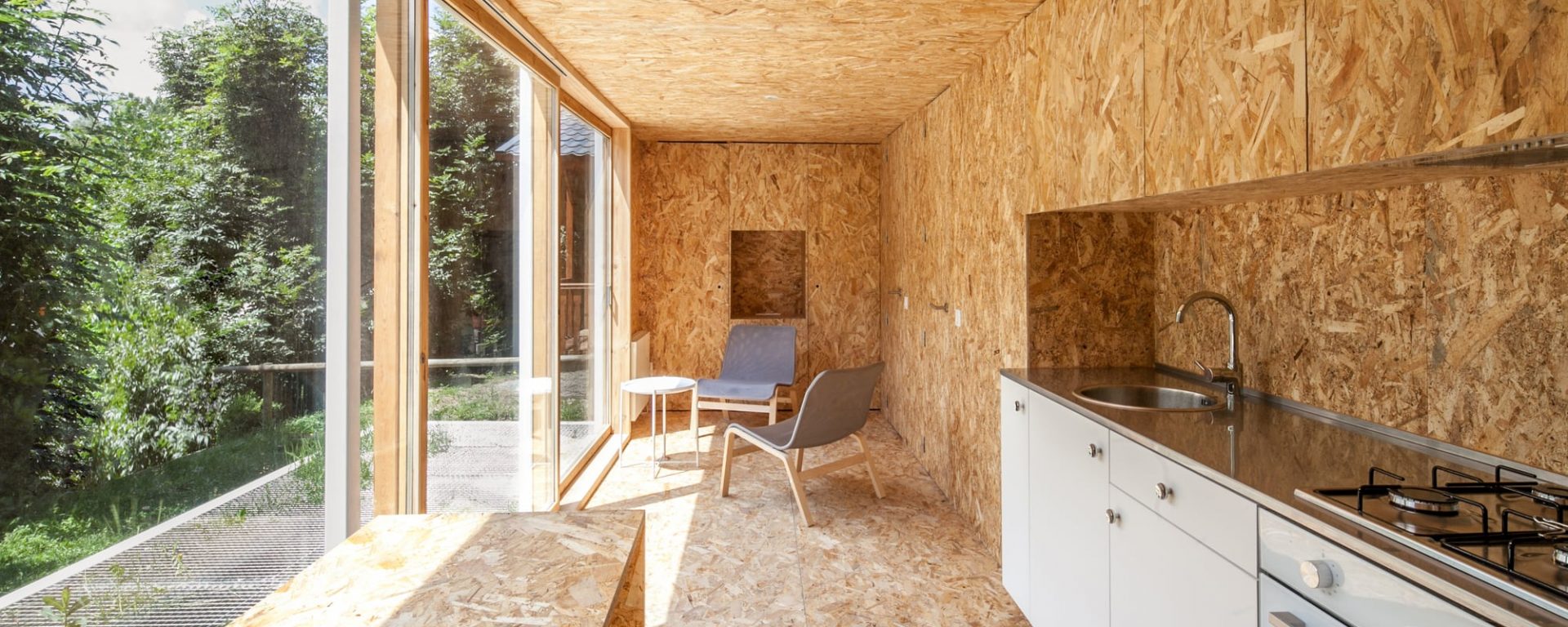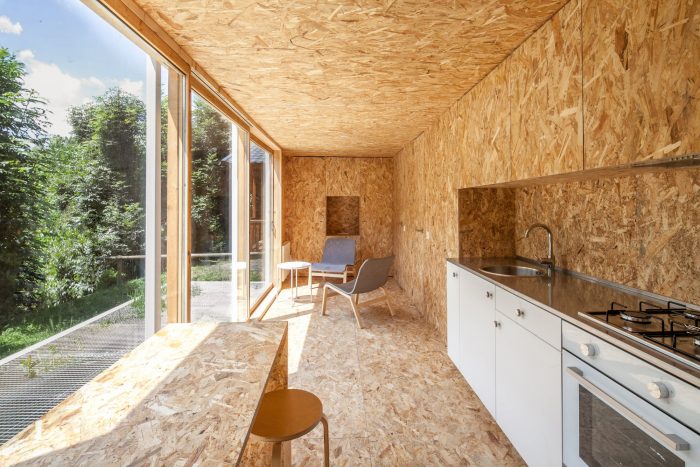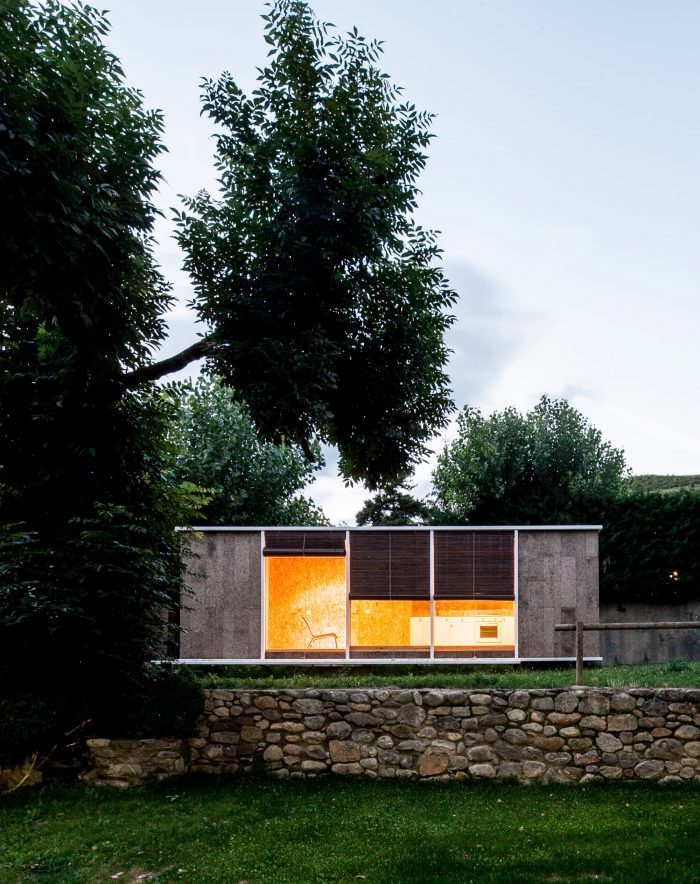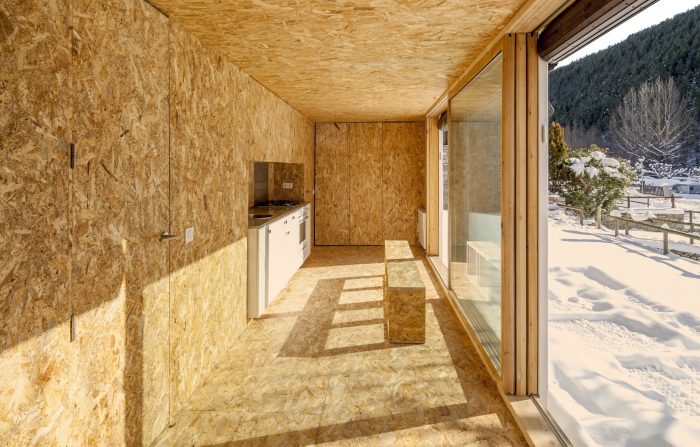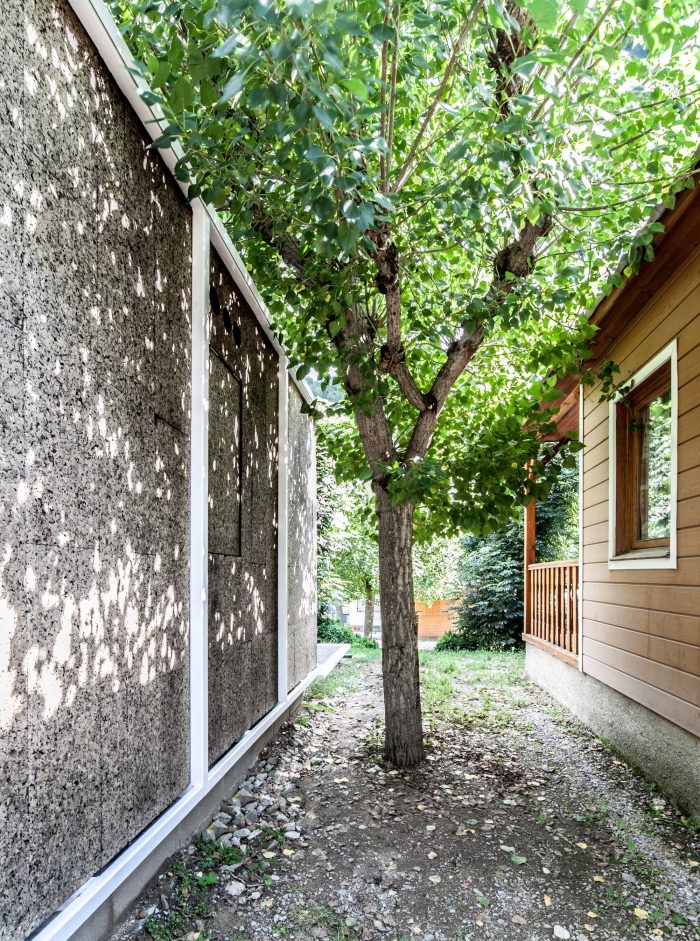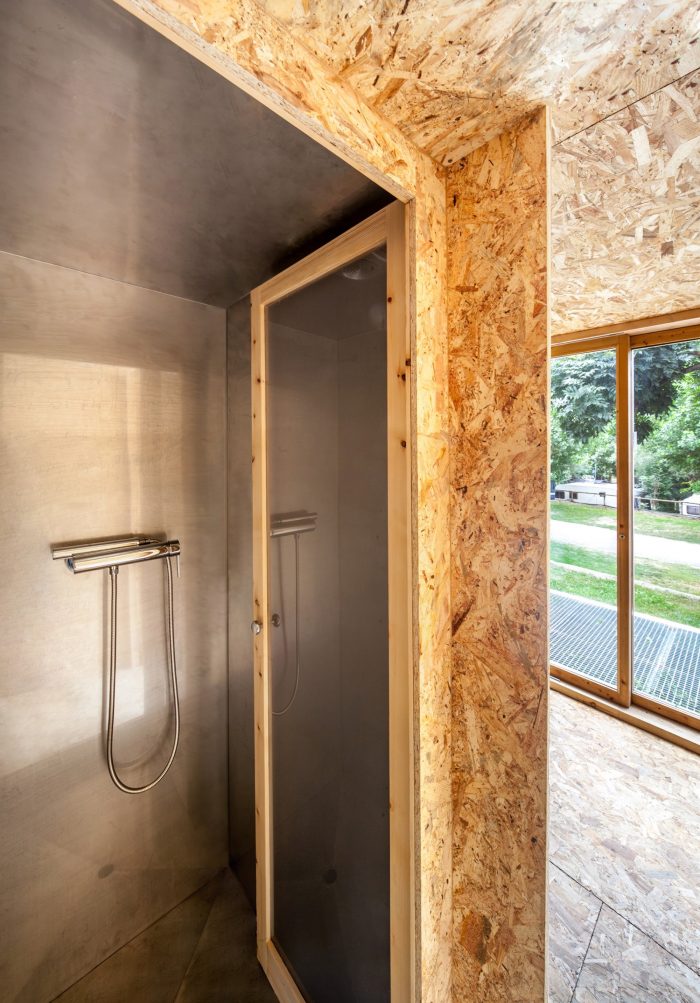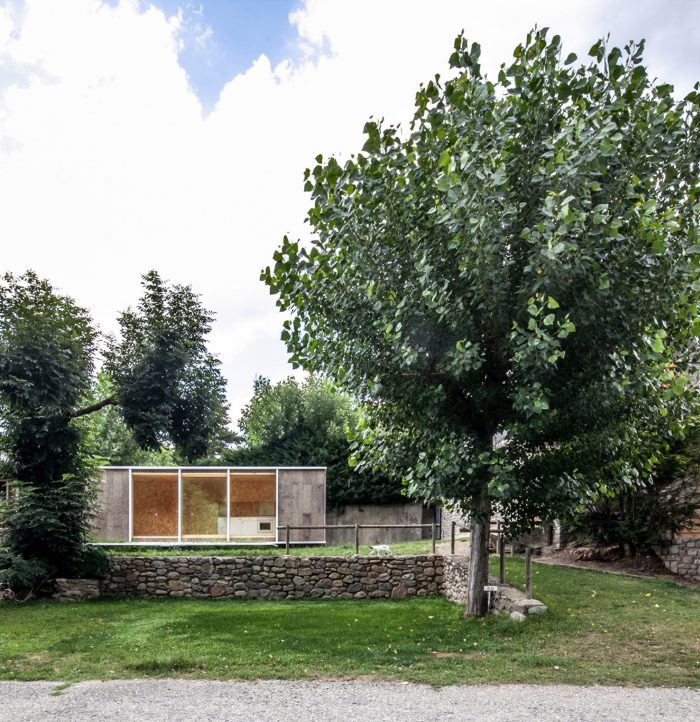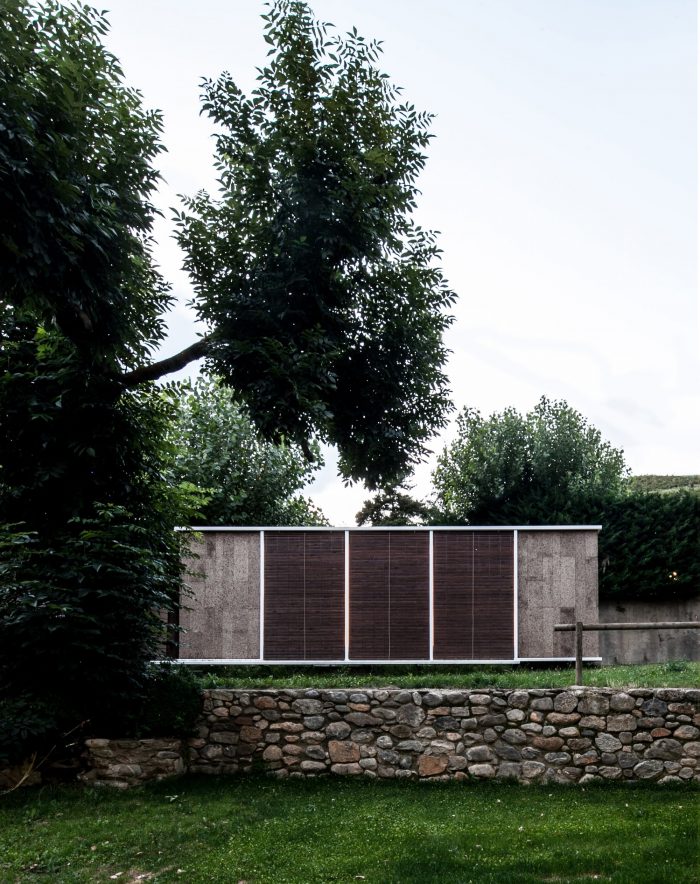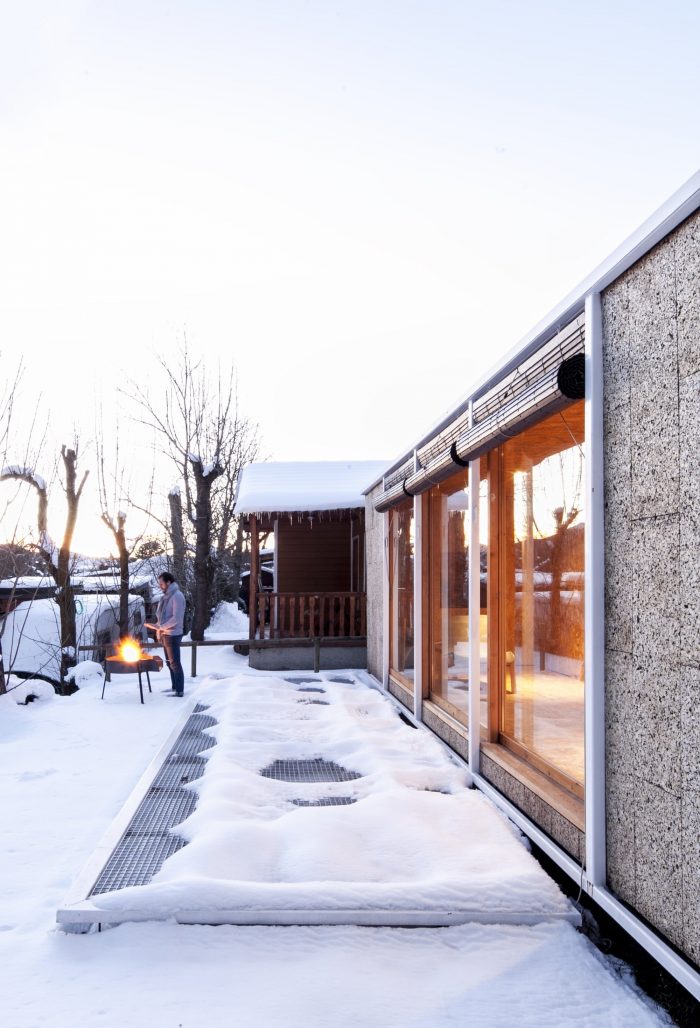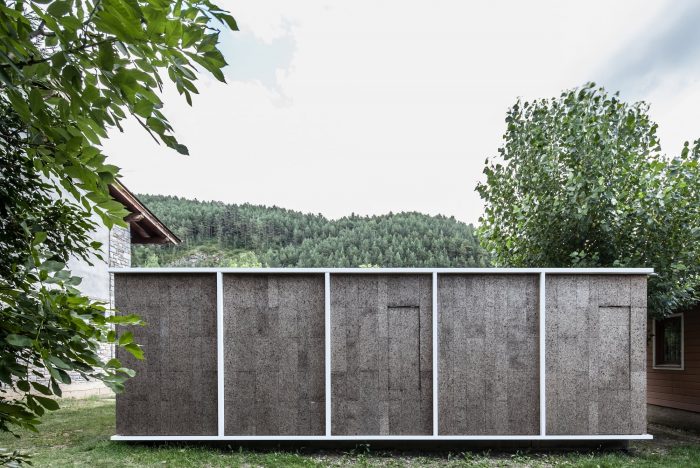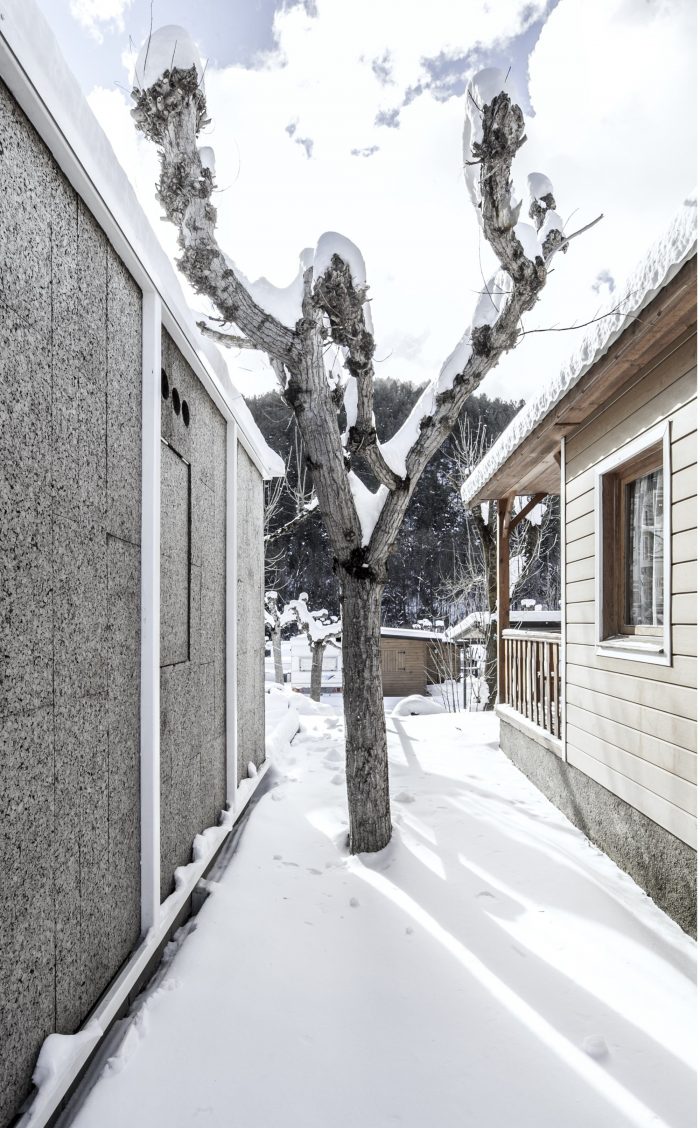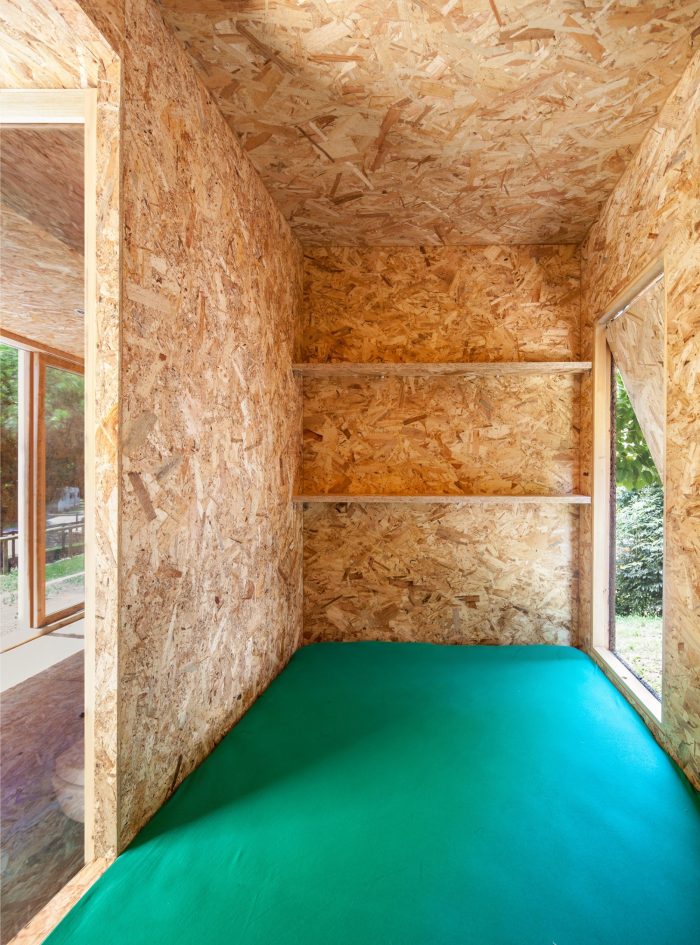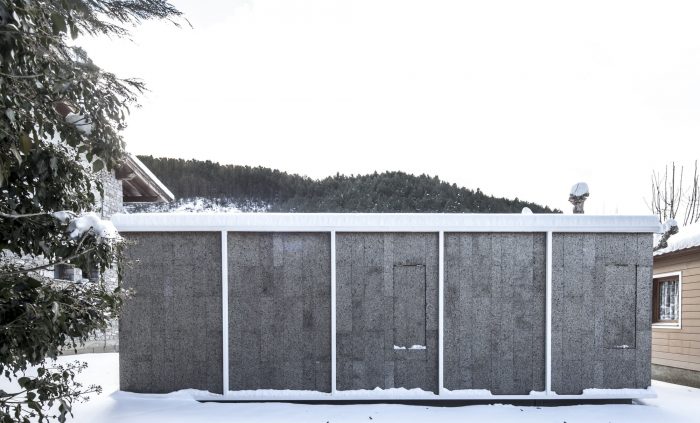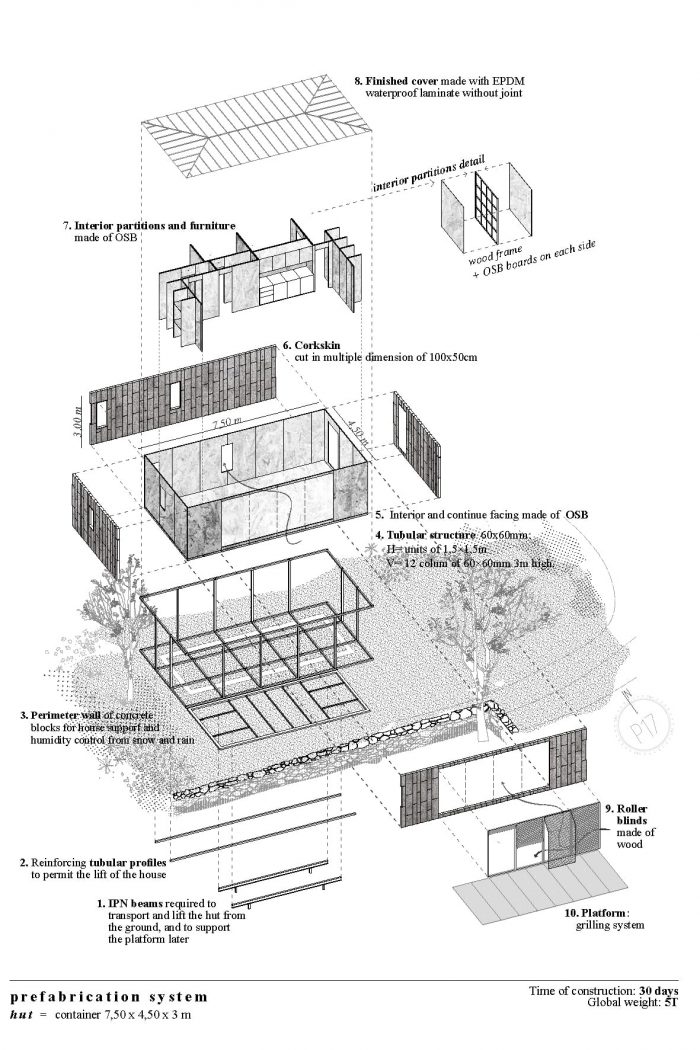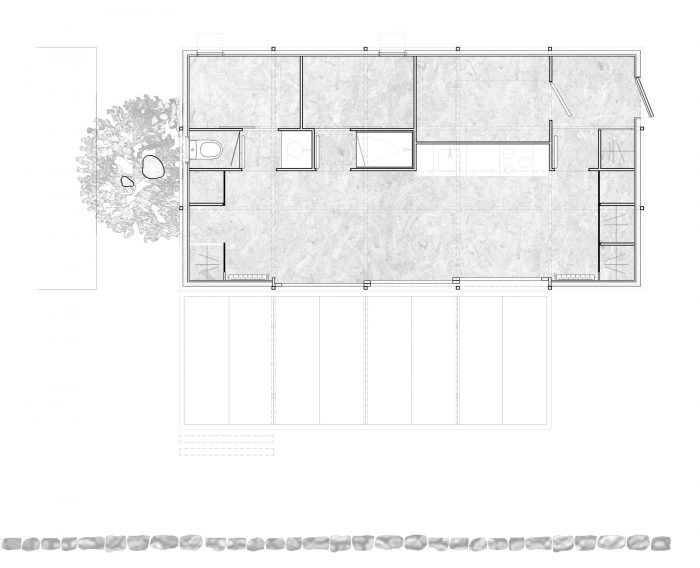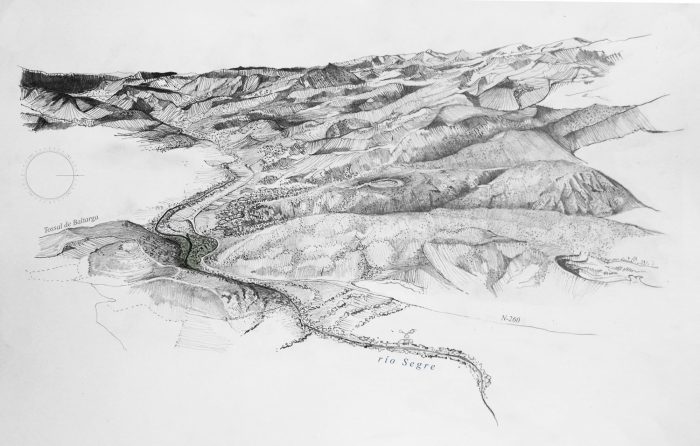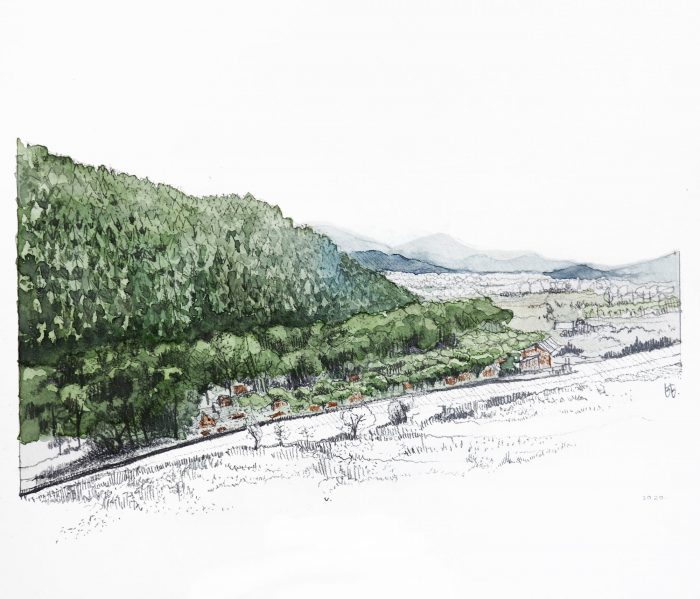该项目提议审查一种通常与对环境不甚敏感的自我建设有关的做法,这种做法继续使用零星占用的元素进行更持久的占用,例如今天为周末休息而设计的营地中出现的那些。
The project proposes to review an often practice associated to a self-construction not very sensitive to the environment, which continues using elements of sporadic occupation in more permanent occupations, such as those that occur today in the camps designed for weekend rest.
我们位于加泰罗尼亚比利牛斯山的一小块露营区,位于杜兰河和塞格雷河的结合部,以及连接比利牛斯山轴线上的Bellver de la Cerdanya和Isòvol的公路之间。在Tossal d’Isòvol de Baltarga森林的环绕下,营地内有一个人居环境概念,肯定显示出对环境的尊重。一方面,有限的能源消耗意味着必须谨慎使用现有资源。另一方面,对私人空间的限制和向外部公开社会服务的趋势,要求保留公共空间,加强社会关系。
We are located in a small parcel of a camping area on the Catalan Pyrenees, situated between the joint of the rivers Durán and Segre, and the road that ties Bellver de la Cerdanya and Isòvol on the Pyrenean axis. Surrounded by the woods of Tossal d’Isòvol de Baltarga, inside the camping stand a habitat concept that surely shows a respectful behaviour toward its context. On one hand, the limited energy consume, awares of the necessity of a careful use of the available resources. On the other hand, the restricted occupation of the private and the tendency to disclose the social services to the exterior, calls up to preserve the common spaces, enhancing the social relations.
拟建的垫子,呈现出三个不同的区域。在前面,烹饪和生活区允许与社会活动连续流动,发生在紧邻的室外。这些公共功能聚集在一个单一的空间里,就像一个大门廊,用三个全高的滑动窗户打开,体现了在外部环境中扩展内部空间的意愿,连同站在外面的浮动平台和卷帘,通过一个疏远的机制,殖民了外部。
The proposed pad, presents three distinguished areas. Toward the front, the cooking and living areas allow a continuous flow with the social activities, occurring in the immediate outdoor. Those public functions are gathered in a single space, resembling a big porch that opens up with three full height sliding windows, embodying the will of extending inner spaces in the outer environment, together with the floating platform standing outside and the rolll up shutters that, through a distancing mechanism, colonize the exterior.
在后部,两个睡眠区和一个储藏室隐藏了房子最私密的区域,让人想起大篷车的最小空间逻辑。通过中央区域,展示了一套通行服务,使住宅具有与邻近平房相同的舒适性。
In the rear part, two sleeping areas and a storage hide the most intimate area of the house, recalling the minimum space logics of the caravans’ word. Through the central area, a set of passing services are displayed to equip the dwelling with the same comfort that some adjacent bungalow presents.
预制技术被认为是一种优化资源的措施,最大限度地限制了风险,同时也是一个节省时间、降低成本的机会,在施工过程中获得更好的精度。
此外,外层作为整个空间的容器,由一个管状结构组成–60x60mm截面–由1.5×1.5m的模块单元建立,构成两个水平平面,由一组12个相同截面的垂直支柱固定,相距3m。下层平面的纵向结构增加了一倍,以便有更好的提升和运输条件。相反,上层平面的横向结构增加了一倍,以应对雪的过载,最终建成一个总长为7.5×4.5×3米的平行四边形。
内层用胶合板完成,覆盖墙壁、地板和天花板,创造一个连续不断的皮肤,达到室内空间所需要的温暖,以对比室外的寒冷场景(环境)。在中间层,从一个100×50厘米的模块开始,为了在外墙设计中增加一些动感,放置了一层膨胀软木。这保证了住宅的绝缘性,同时给它一个模仿性的外观,尊重周围的树林。
The prefab technique is considered as a measure to optimize resources, limiting at best the risks, as well as an opportunity to save time, reduce costs and obtain a better precision during the construction progress.
Moreover, the outer layer, as a container of the whole space, consists of a tubular structure – 60x60mm section – built up by modular units of 1.5×1.5m, composing two horizontal planes, fixed 3m apart by a set of 12 vertical pillars with the same section. The lower plane doubles its longitudinal structure, to allow better lifting and transportation conditions. The upper plane, instead, doubles the transversal structure, to respond to the snow overload, building in the end a parallelepiped of 7.5×4.5x3m total.
The inner layer is finished with plywood panels, covering walls, floors and ceilings, creating a continuous evolving skin that reaches the warmth wanted for the indoor space to contrast the cold scene (milieu) outdoor. In the intermediate layer, starting from a 100x50cm module that gets divided in its multiples to add some movement in the facade design, a coat of expanded cork is placed. This assure a great insulation to the dwelling, meanwhile giving it a mimetic look, respect the woods around.
在屋顶层面,一个连续的橡胶膜,没有接缝,不含氯和卤素,铺设在一个略微倾斜的结构上,保证了建筑的防水性,使用的材料在其生产过程的任何阶段都不会造成污染,也让人想起周围的深色屋顶。
At the roof level, a continuous rubber membrane, with no joints, chlorine and halogen free, layed on a slightly sloping structure, guarantees the waterproofing of the architecture, using a material that does not pollute during any phase of its production process and also recalls to the dark roofs in the surroundings.
几个被动系统已经被考虑,目的是减少项目的能源需求。住宅朝南,滑动门结合了低辐射的双层玻璃–以限制冬季的热量损失–以及,为了限制夏季的传输,一个由简单的卷帘制成的太阳能控制系统,它也投射到交叉的通风系统的阴影。
通过使用一些混凝土块,将房子从地形上抬高,一个空气室避免了土壤湿度的上升,使建筑免受霜冻和来自大地的热量。
Several passive systems have been considered, aiming the energy request reduction of the project: Orienting the dwelling toward South, the sliding doors combine low emissive double glasses – to limit heat loss during winter – and, to restrict transmissions during summer, a solar control system made of simple roll-up shutters, which also projects a shadow onto the crossed ventilation system.
Elevating the house from the terrain, through the use of some concrete blocks, an air-chamber avoid the rise of soil humidity, screening the building from the frost and the heat coming from the earth.
外墙采用膨胀软木,室内采用胶合板,产生了很好的热和声学保护,并减少了任何可能的热桥。此外,该材料来自可持续发展的森林,需要非常少的维护,可以完全回收利用。 规划一个轻型和干燥的结构,大大减少了工程的总重量,因此减轻了电梯、运输和所需的人力工作。
The combination of expanded cork on the facade, with plywood panels on the interior elevations, generates a great thermal and acoustic protection, beyond turning down any possible thermal bridge. Furthermore, coming from sustainable forests and needing a very low maintenance, the material can be completely recycled. Planning a light and dry structure, the total weight of the work is significantly reduced, easing therefore the lift, transportation and needed man work.
该项目将目光投向它所处的环境,拥抱它的物质性,并提出一个符合其特殊位置的社会方案,同时响应气候要求,要求在建设过程中,首先是在其整个生命周期中,显著减少能源的使用。
同样,场地的零星背景,与地面分离,模拟一些比例和尺寸,使住宅可以移动,并反思所有这些元素,如平台、遮阳篷和台阶,这些元素在野营的游牧建筑中起着至关重要的作用,它们现在已经从自我建设的类型上更进一步,成为能源效率系统。冬天的雪引起了营地的变化。一切,部分或完全消失。所述的工作也是如此。
The project lays its gaze on the environment where it is situated, embracing its materiality and proposing a social program that meets its peculiar location, as well as responding to the climate requests, demanding for a significant decrease of energy usage in the construction process, at first, and during its whole life circle also.
Likewise the sporadic context of the site, detaching from the ground, simulating some proportion and dimensions that allow the dwelling to be moved around, and reflecting upon all those elements such as the platform, the awning and the steps that play a crucial role into the nomadic architecture of camping, they have now taken a step further from the kind of self-construction, to become energetic efficiency systems. The winter snow provoke changes in the campsite. Everything, partially or completely disappear. The described work too.
Architects: Agora Arquitectura
Area : 40 m²
Year : 2019
Photographs :Joan Casals Pañella
Manufacturers : AutoDesk, Barnacork, Persiana Barcelona
Lead Architect : Joan Casals Pañella, Jose Luis Cisneros Bardolet
Consultants : Wood&Bois SL
Collaborators : Belen Ramos Jimenez, Giulia Valentino, Laurence Dugardyn, Madeline Salca , Michele Di Maggio
City : Isóvol
Country : Spain

